
Renzo Piano is an Italian architect. His notable buildings include the Centre Georges Pompidou in Paris, The Shard in London (2012), the Whitney Museum of American Art in New York City (2015), İstanbul Modern in Istanbul (2022) and Stavros Niarchos Foundation Cultural Center in Athens (2016). He won the Pritzker Architecture Prize in 1998.

A curtain wall is an exterior covering of a building in which the outer walls are non-structural, instead serving to protect the interior of the building from the elements. Because the curtain wall façade carries no structural load beyond its own dead load weight, it can be made of lightweight materials. The wall transfers lateral wind loads upon it to the main building structure through connections at floors or columns of the building.
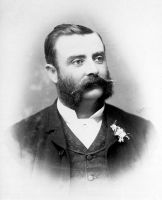
William Pitt was an Australian architect and politician. Pitt is best known as one of the outstanding architects of the "boom" era of the 1880s in Melbourne, designing some of the city's most elaborate High Victorian commercial buildings. He worked in a range of styles including Gothic Revival, Italianate, French Second Empire, and his own inventive eclectic compositions. He had a notable second career after the crash of the 1890s, becoming a specialist in theatres and industrial buildings.

The Bryant and May Factory, located in the Cremorne area of Richmond in Melbourne, is notable for its distinctive red brick buildings, and as the location for the manufacture of Australia's most popular brand of matches through much of the 20th century. Bryant and May adopted the brand name Redheads in 1946, and it is still the most popular match in the country, although now manufactured in Sweden.
Sir Roy Burman Grounds was an Australian architect. His early work included buildings influenced by the Moderne movement of the 1930s, and his later buildings of the 1950s and 1960s, such as the National Gallery of Victoria and the adjacent Victorian Arts Centre, cemented his legacy as a leader in Australian architecture.

The Fagus Factory, a shoe last factory in Alfeld on the Leine, Lower Saxony, Germany, is an important example of early modern architecture. Commissioned by owner Carl Benscheidt who wanted a radical structure to express the company's break from the past, the factory was designed by Walter Gropius and Adolf Meyer. It was constructed between 1911 and 1913, with additions and interiors completed in 1925. Because of its influence in the development of modern architecture and outstanding design, the factory has been listed as a UNESCO World Heritage Site since 2011.
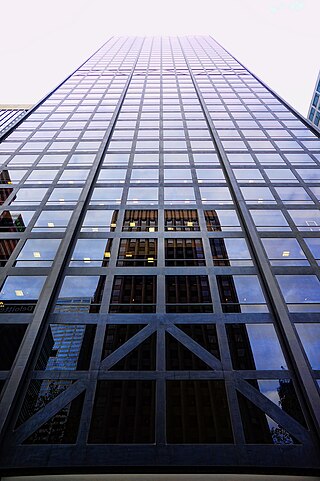
140 William Street is a 41-storey 152m tall steel, concrete and glass building located in the western end of the central business district of Melbourne, Victoria, Australia. Constructed between 1969 and 1972, BHP House was designed by the architectural practice Yuncken Freeman alongside engineers Irwinconsult, with heavy influence of contemporary skyscrapers in Chicago, Illinois. The local architects sought technical advice from Bangladeshi-American structural engineer Fazlur Rahman Khan, of renowned American architectural firm Skidmore, Owings & Merrill, spending ten weeks at its Chicago office in 1968. At the time, BHP House was known to be the tallest steel-framed building and the first office building in Australia to use a “total energy concept” – the generation of its own electricity using BHP natural gas. The name BHP House came from the building being the national headquarters of BHP. BHP House has been included in the Victorian Heritage Register for significance to the State of Victoria for following three reasons:

The former Van Nelle Factory on the Schie in Rotterdam, is considered a prime example of the International Style based upon constructivist architecture. It has been a designated UNESCO World Heritage Site since 2014. Soon after it was built, prominent architects described the factory as "the most beautiful spectacle of the modern age" and "a poem in steel and glass".

Thomas Lenton Parr AM was an Australian sculptor and teacher.
Teisutis 'Joe' Zikaras was an Australian sculptor born in Panevėžys, Lithuania. He earned a diploma at the School of Fine Arts, Kaunas, Lithuania, where his father Juozas, creator of Lithuania's famous Liberty statue, was Head. He left Lithuania after its takeover by Russia and spent two years 1946–48 teaching drawing and sculpture at a campus of the École des Arts et Métiers in Freiburg, Germany, an art school for Lithuanian refugees where Aleksandras Marčiulionis was a principal.
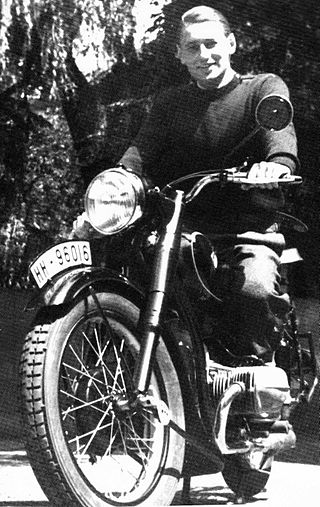
Frederick Romberg,, , was a Swiss-trained architect who migrated to Australia in 1938, and became a leading figure in the development of Modernism in his adopted city.

The Sunshine Harvester works was an Australian factory making agricultural equipment founded by industrialist H. V. McKay, and with engineering development headed by H.B. Garde.

Norma Redpath was a prominent Australian sculptor, who worked in Italy and Melbourne.
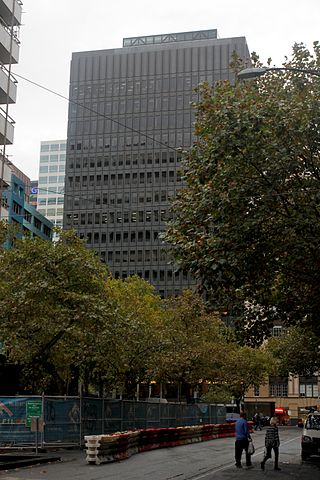
AON Centre is a commercial office complex located in Melbourne, Victoria, Australia at 430—444 Collins Street, in the heart of the Melbourne CBD. A product of a rigorous design process from Australian architecture firm Yuncken Freeman Architects in 1962, the building undertook a two-year construction period and in 1965 it was first opened revealing a 70 metre high 18-storey structure.

Yarrabee Flats is a building located at 44 Walsh street, South Yarra, Melbourne, Australia consisting of five flats. Built in 1940. it was designed by the Australian architecture firm, Romberg & Shaw, and is known for introducing European Modernist architecture into flat development in Melbourne.

The Blue Condominium, also known as the Blue Tower, is located in the Lower East Side neighborhood of New York City at 105 Norfolk Street. Designed by Bernard Tschumi, it is his first residential and first high-rise structure. At 16 stories tall, it opened in 2007 with 32 condominium apartments, a ground floor commercial space occupied by the Thierry Goldberg Gallery, and a third floor roof terrace for residents. Commercial at the ground floor with residential above is a common method of programming space in urban residential projects. The tower is not LEED certified. The faceted pixelated form, a reaction to the zoning and set back requirements, is clad in a blue panel and window curtain wall system, contrasting with the low rise brick buildings that typify the neighborhood.

No. 2 Goods Shed is a large railway freight shed in the former Spencer Street rail yards off Flinders Street Extension, Melbourne, Australia. It was constructed in 1889, originally called 'A Goods Shed', and at the time was the longest single building in Australia. Its address is at 733 Bourke Street, Docklands.
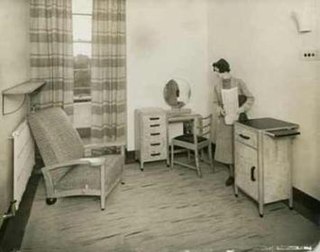
Mary Turner Shaw (1906–1990) was born in Caulfield, Melbourne, Australia. She is one of the first women to be employed as an architect in the early 1930s in Australia and thus pioneered new pathways for female architects. Her career is widely known for her working qualities that made her oversee many projects across Australia. She also became a distinct figure as an architectural historian, when she started publishing books and written articles. Her skills were diverse as she worked as a fashion designer, interior designer, project manager, public works architect and pioneer architectural librarian. As historian Geoffrey Serle described her, she was "a born writer and research historian with imagination, the ability to tell a story and define and ask fundamental questions".

The Supreme Court (Building), is a court building located at 192-228 William Street in Melbourne, Australia. It is part of a complex of buildings which, together with the Supreme Court Library and Court of Appeal, are known as the Melbourne Law Courts. It is currently the home to the Supreme Court of Victoria, the most senior court in the state of Victoria, and inferior only to the High Court of Australia. The Supreme Court has occupied the site since its first sitting in February 1884.

Qantas House is an Australian heritage-listed office building at 68–96 Hunter Street, Sydney. It was designed by Rudder, Littlemore & Rudder and built from 1955 to 1957 by Concrete Constructions Pty Ltd. It is also known as No. 1 Chifley Square. The site was added to the New South Wales State Heritage Register on 25 May 2001.


















